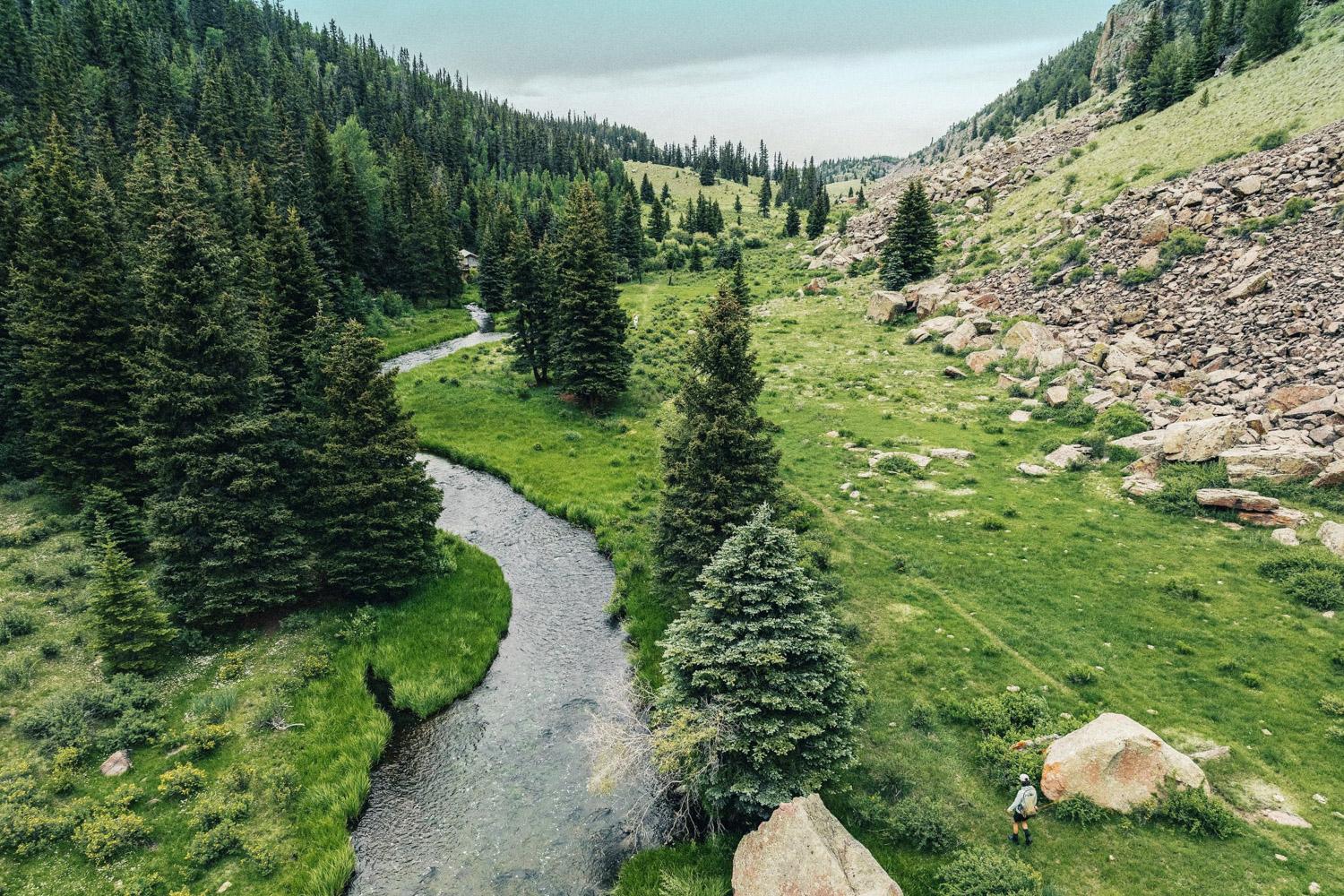
When it comes to great Colorado exports, a lot of folks these days think of beer. But maybe not the can the beer comes in.
Still, there's little doubt which is the greater engineering marvel. Today's aluminum cans are cheap, durable and stackable. They don't leach any flavor into beverages. Jonathan Waldman, author of "Rust: The Longest War," points out one more serious advantage: cans very rarely explode and send aluminum shrapnel into your eyes.
That's in large part because of engineering work done in Colorado. Bill Coors developed modern beer cans in Golden in the 1950s. Ball Corporation, the world's largest can maker, has corporate headquarters in Broomfield. Together, Ball and Coors operate a factory in Golden that churns out 6 million cans a day.
Waldman explained to Colorado Matters host Nathan Heffel why the technical achievement may have come at a cost to people's health. The inner liner that keeps cans from corroding contains BPA -- a plastic. Scientists have linked the chemical to cancer, but it's not clear if the small doses found in aluminum cans have an effect on human health.
Read An Excerpt from "Rust: The Longest War"
They say a lot of things about boats. They say a boat is a hole in the water that you throw money into. They say boat stands for “bring out another thousand.” They say that the pleasures of owning and sailing a boat are comparable to standing, fully clothed, in a cold shower while tearing up twenty-dollar bills. Consequently, they say that the best day of a sailor’s life, aside from the day he buys a boat, is the day he sells it. Ignoring all of this wisdom, I bought a forty-foot sailboat. This was at the end of 2007. She was in San Carlos, Mexico, at a pretty marina on the Sea of Cortés. There were palm trees and haciendas, with deep sparkling water to the west, a rugged volcanic tower to the east, and an immaculate Sonoran sky overhead. With two friends, we split her three ways. I’d thought she was a bargain, but the marina was more bonita than our new boat. Our sloop was thirty years old, and showed her age. There were little rust rings around every screw on the deck, rust stains on the stanchions, bow pulpit, and pushpit, streaks of rust down the topsides. A white powder surrounded the rivets in the mast. The jib car tracks had corroded so badly that there was a layer of goop beneath them. Some of the bronze through-hulls had turned a frightening green, while a few of the seacocks were so corroded that they wouldn’t budge. The stainless steel water tanks had rusted, too, and they leaked. Her appearance was at first so grim that I wished we had named her the Unshine, which would have been a very easy change from Sunshine. Instead we chose an obscure Greek word that nobody could pronounce or define. But if Syzygy had cosmetic defects, we didn’t care. Then we took her sailing. The diesel engine overheated on the way out of the marina, because the heat exchanger was caked up with rust. The reef hook had rusted so badly that it snapped the first time we furled the mainsail. Blocks had seized up, and the winches were so tight they offered little mechanical advantage. The wind vane almost fell off. Instruments didn’t work, because the copper wires winding through the bilge had corroded so thoroughly that they no longer conducted electrical current. Shackles, turnbuckles, clevis pins, chain plates, backing plates, furler bearings, engine parts, the windlass axle—everything that could rust had rusted. Water, salt, air, and time had taken their standard toll, and corroded my bank account, too. That’s how rust ate into my life . . . Rust has knocked down bridges, killing dozens. It’s killed at least a handful of people at nuclear power plants, nearly caused reactor melt-downs, and challenged those storing nuclear waste. At the height of the Cold War, it turned our most powerful nukes into duds. Dealing with it has shut down the nation’s largest oil pipeline, bringing about negotiations with OPEC. It’s rendered military jets and ships unfit for service, caused the crash of an F-16 and a Huey, and torn apart the fuselage of a commercial plane midflight. In the 1970s, it was implicated in a number of house fires, when, as copper prices shot up, electricians resorted to aluminum wires. More recently, in the “typhoid Mary of corrosion,” furnaces in Virginia houses failed as a result of Chinese drywall that contained strontium sulfide. They rusted out in two years. One hundred fifty years after massive ten-inch cast iron guns attacked Fort Sumter, rust is counterattacking. Union forces have mobilized with marine-grade epoxy and humidity sensors. Rust slows down container ships before stopping them entirely by aiding in the untimely removal of their propellers. It causes hundreds of explosions in manholes, blows up washing machines, and launches water heaters through the roof, sky high. It clogs the nozzles of fire sprinkler heads: a double whammy for oxidation. It damages fuel tanks and then engines. It seizes up weapons, manhandles mufflers, destroys highway guardrails, and spreads like a cancer in concrete. It’s opened up crypts. Twenty-five miles northeast of San Francisco, one of the country’s largest rust headaches bobs at anchor in Suisun Bay, and puts Syzygy to shame. Fittingly, the National Defense Reserve Fleet belongs to the US Department of Transportation, an agency that nearly plays God in its attempt to placate the needs of man and machine. Scores of people inspect on a daily basis as many old merchant ships that, in earlier extralegal times, would have been scuttled offshore. Now, the ships are too fragile to be hauled out and repainted, and not worth towing to Texas to be scrapped. Lacking other options, to Texas they’ve gone. Confounding matters, the US Coast Guard insisted in 2006 that the hulls of the ships be cleaned of invasive mussels before being moved, while the California Water Quality Control Board demanded that the bay not be polluted during said cleaning, and threatened to fine the Maritime Administration $25,000 a day until it came up with a plan. Environmental groups sued, demanding studies. While ten biologists, ecologists, toxicologists, statisticians, modelers, and mapping experts collected clams and mussels and took hundreds of sediment samples, the ships went on rusting. Big surprise: they contaminated the bay. At least twenty-one tons of lead, zinc, barium, copper, and other toxic metals have fallen off of the ships. What to do about the Reserve Fleet conundrum is such a touchy question that Senator Dianne Feinstein, who has a position on every environmental issue in California, officially has no position on the matter. On the other coast, two dozen flip-flop-wearing employees of the US Naval Research Lab fill their time studying corrosion-resisting paints under palm trees at Naval Air Station Key West. Long before the place was an air station, in 1883, the Naval Advisory Board tested anticorrosive concoctions there, because rust was plaguing the navy. Today’s paints self-heal, or can be applied underwater, or change color when exposed to rust—and still, rust plagues the navy. Rust, in fact, poses the number one threat to the most powerful navy on earth. By many measures, and according to many admirals (who sound as if they’re employed by the DOT), the most powerful navy on earth is losing the fight. The name of one of the department’s annual maintenance conferences: Mega Rust. The motto of that Florida lab: “In rust we trust.” |
Reprinted from Rust: The Longest War by Jonathan Waldman with permission of Simon & Schuster, Inc. Copyright (c) Jonathan Waldman, 2015.









